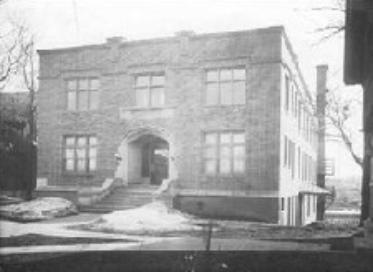The Maternity Hospital was significant for women's and medical history in Minnesota. It operated from 1887 to 1956 in response to high mortality rates for women in childbirth.
Dr. Martha Ripley was one of the few female physicians in the late 19th century. Ripley advocated for women's rights and social reform in Minneapolis for over 30 years. Dr. Ripley's first hospital opened in 1887 in a 20-room building at 2529 4th Avenue South. The hospital's physicians and board members were all women. The individualization and specialization in medical care guided the hospital's operations and services. They provided maternity care primarily to poor, unmarried, and widowed women. The hospital outgrew its space, so it relocated to the former Ankeny family estate in 1896.
The new site in North Minneapolis included four buildings. The Ankeny house was the primary hospital until a new one was built in 1916, shortly after Dr. Ripley's death. It is a two-story utilitarian brick building with a Tudor style arched entrance. It was built by W. A. Elliot. The Marshall Stacy Nursery was built in 1909 for infant care and was demolished in 1965. The Babies' Bungalow was built in 1910. It is a 1.5-story stone and stucco cottage with mock timbering and a gabled roof. It was an intensive care unit for sick babies. Both the nursery and bungalow were built by E. G. Evensta. The Emily Paddock Cottage was built in 1911. It was built by F. H. Raidt. It is a 3.5-story brick and stucco house with Elizabethan Revival features. It was a home for the nurses.
The hospital was transformed into the Queen Care Nursing Home in 1956. The buildings have all been remodeled into affordable housing units.



